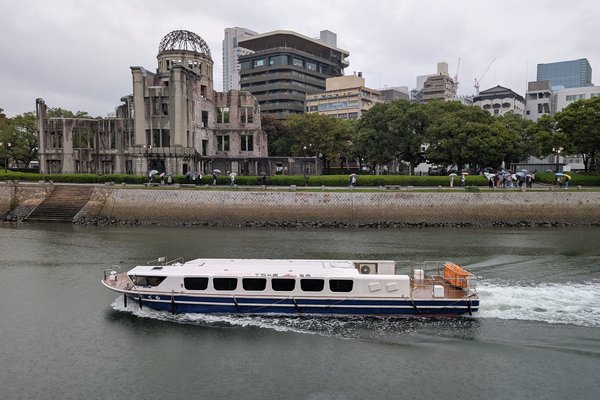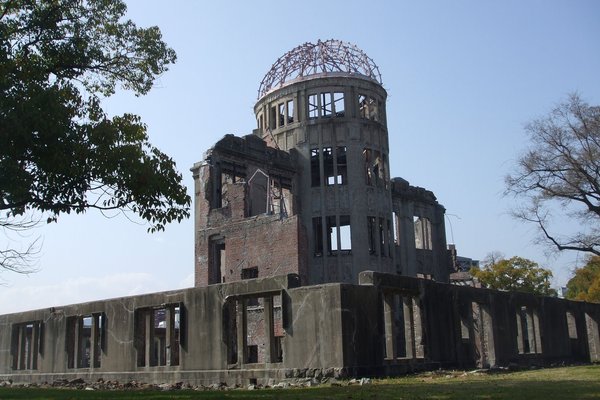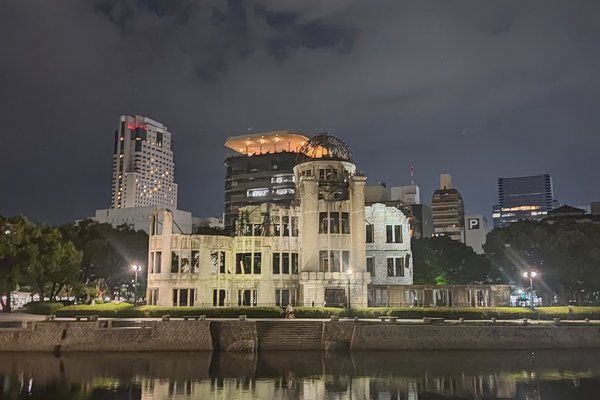Japan
Genbaku Dome
The Hiroshima Peace Memorial (Genbaku Dome) is a symbol of world peace after the destruction caused by the first atomic bomb.
The building, a former industrial promotion site, was the only one left standing near the centre of the explosion on 6 August 1945 and it has been preserved as a ruin. It symbolizes the hope for the ultimate elimination of all nuclear weapons. The surrounding Peace Memorial Park (in the buffer zone) holds various smaller monuments to honor special groups of victims and there is also a museum.
Community Perspective: a moving site to visit, although the interpretation could be more balanced. Hiroshima overall nowadays is perhaps Japan’s most friendly and pleasant city.
Site Info
Official Information
- Full Name
- Hiroshima Peace Memorial (Genbaku Dome) (ID: 775)
- Country
- Japan
- Status
-
Inscribed 1996
Site history
History of Genbaku Dome
- 1996: Deferred
- Bureau - needs special debate at next Bureau meeting
- 1996: Inscribed
- Inscribed
- Type
- Cultural
- Criteria
- vi
Links
- UNESCO
- whc.unesco.org
- Official
-
- hpmmuseum.jp — Hiroshima Peace Site
All Links
UNESCO.org
- whc.unesco.org — whc.unesco.org/
Official Website
- hpmmuseum.jp — Hiroshima Peace Site
News Article
- Aug. 11, 2020 bbc.com — Hiroshima bomb: Japan marks 75 years since nuclear attack
- Feb. 21, 2015 japantimes.co.jp — Hiroshima split on moving floating oyster eatery near A-Bomb Dome
- Jan. 28, 2014 ajw.asahi.com — Atomic Bomb Dome to be strengthened for quakes
Community Information
- Community Category
- Secular structure: Memorials and Monuments
Travel Information
One million visitors or more
Not open to tourists
The structure is fenced and the core zone is within that fence.
Hiroshima Hotspot
Recent Connections
-
Peace
Hiroshima Peace Memorial (Genbaku Dome) -
Not open to tourists
The structure is fenced and the core zo…
-
Hiroshima Hotspot
In Hiroshima
Connections of Genbaku Dome
- Geography
-
-
River deltas
Genbaku Atomic Dome and the whole city of Hiroshima are built on the delta of Ota River
-
- Trivia
-
-
One million visitors or more
The total number of visitors to the museum since April of last year reached 2,003,718 on Feb. 15, according to the Hiroshima Peace Culture Foundation. (2024) / Hiroshima Peace Museum - 1.739 Million (2016)
-
- History
-
-
Second World War
The Genbaku Dome is part of the Hiroshima Peace Memorial Park in Hiroshima, Japan and serves as a memorial to the over 140,000 people who were killed in the atomic bombing of Hiroshima on 6 August 1945. At 8:15 a.m. on 6 August 1945, the first atomic bomb to be used in the Second World War was dropped by the United States Army Air Forces from the Enola Gay, a B-29 bomber. The force of the atomic bomb effectively obliterated the city of Hiroshima, Japan. -
Historical Events
1945 nuclear bomb blast
-
- Architecture
-
-
Buildings designed by Czech architects outside the borders of Czechia
Jan Letzel (born in Nachod, Bohemia, Austro-Hungarian Empire): "His most famous design was the huge administrative building of the Japanese Chamber of Commerce and Industry in Hiroshima, now the Hiroshima Peace Memorial." (wiki)See en.wikipedia.org
-
Domes
-
Steel-Framed construction
Steel-framed elliptical dome of Hiroshima's Atomic Bomb Dome -
Art Nouveau
See brentkatte.com
-
- Damaged
-
-
Damaged in World War II
Originally the Hiroshima Prefectural Industrial Promotion Hall, it survived as a ruin at the atomic bombing of Hiroshima on 6 August 1945.
-
- World Heritage Process
-
-
WHS inscribed solely on Criterion VI
1996 -
Controversial at inscription
Reservations expressed by China and disassociation by USA. -
Inscribed on a single criterion only
vi. to be directly or tangibly associated with events or living traditions, with ideas, or with beliefs, with artistic and literary works of outstanding universal significance. (The Committee considers that this criterion should preferably be used in conjunction with other criteria) -
Single Monuments
-
- Human Activity
-
-
Nuclear power
"The Hiroshima Peace Memorial (Genbaku Dome) is the only structure left standing near the hypocenter of the first atomic bomb which exploded on 6 August 1945" (Brief synthesis OUV) -
Memories of recent conflicts
-
Thanatourist destination
Atom Bomb site
-
- Timeline
-
-
Built in the 20th century
After atomic bomb of 6 August 1945
-
- WHS Hotspots
-
-
Hiroshima Hotspot
In Hiroshima
-
- Visiting conditions
-
-
Not open to tourists
The structure is fenced and the core zone is within that fence.
-
- WHS Names
-
-
Peace
Hiroshima Peace Memorial (Genbaku Dome)
-
News
- bbc.com 08/11/2020
- Hiroshima bomb: Japan marks 75 yea…
- japantimes.co.jp 02/21/2015
- Hiroshima split on moving floating…
- ajw.asahi.com 01/28/2014
- Atomic Bomb Dome to be strengthene…
Recent Visitors
Visitors of Genbaku Dome
- AC
- Adam Hancock
- Adrian Turtschi
- Afshin Iranpour
- Alexander Barabanov
- Alexander Lehmann
- Alexander Parsons
- Alex Goh
- AlexSchedel
- alicemears
- Ammon Watkins
- Ana Lozano
- Andrea Szabo
- Anna Wludarska
- Ansitong
- Artur Anuszewski
- Aspasia
- Atila Ege
- AustralLights
- Badwater
- Bamse
- basementonline
- BaziFettehenne
- BenReeve
- Bill Koo
- Bill Maurmann
- Boj
- Bram de Bruin
- Brett Baumann
- campmany
- Can SARICA
- Carlo Medina
- Carlo Sarion
- Caspar
- CeeMon
- Celina Nanbara
- Chantal den Haan
- chenboada
- Cheryl
- Chole Ross
- Christine
- Christoph
- Christravelblog
- Claire Bradshaw
- Clyde
- Colossus
- ctravel
- CugelVance
- cutecid
- cwthong
- Cyberczar
- czesioszpachelka
- Daniel Chazad
- Dan Pettigrew
- Deffra
- Dimitar Krastev
- DL
- DouglasR
- Dr. Caligari
- Els Slots
- Erik Jelinek
- Errol Neo
- Eva Kisgyorgy
- Fan Yibo
- Federico P.
- Feldhase
- Felicité
- Filippo Ubaldi
- Frederik Dawson
- FS
- GabLabCebu
- Garrett
- Gary Arndt
- Geert Luiken
- George Gdanski
- GeorgeIng61
- Hammeel
- Harald T.
- Harry Mitsidis
- Hdwilsonau
- henrik_hannfors
- henryjiao18
- hotpickle
- Hunstow
- Iain Jackson
- inomusay
- irosey
- Jaakkotoivanen
- Jacob Choi
- Jasam
- Jason Boulette
- Jeanne OGrady
- Jeffrey Chai
- JL
- João Aender
- Joel on the Road
- Jonas Hagung
- Jonas Kremer
- Jon Bauer
- Jon Opol
- JoStof
- Joyce van Soest
- Karito Vies
- Kasia M.
- Kasper
- Ken DJ
- Kevin Padley-Knight
- Kurt Lauer
- Lee Kai Loong
- Leonie Geurts
- Li
- Liamps91
- lichia
- Lithobates
- Loic Pedras
- Lucio
- Luis Filipe Gaspar
- Lukasz Palczewski
- Luke LOU
- Maciej Gil
- marcel staron
- Mardigny
- Mariam
- Marlies van Wolfswinkel
- Martinacurra88
- Matthewsharris
- MaYumin
- M.HATADA
- Mia esguerra
- Michael Novins
- Michael Turtle
- Miguel Marquez
- Mihai Dascalu
- Mikko
- Miloš Tašković
- MMM
- Momac96
- Monica Tasciotti
- Morodhi
- Msarmiento1979
- Nafis N
- Naim Y
- nan
- Neil McPaul
- Nihal Ege
- NoahFranc
- _oscar
- Pat Martin
- Patrik
- Pchxiao
- Peter Lööv
- Petteri
- Philipp Leu
- Philipp Peterer
- phillipmeng
- Pincze
- Porcho
- Ralf Regele
- Randi Thomsen
- ReallyDeepThoughts
- Reisedachs
- Reza
- Riccardo Quaranta
- Rick Ohm
- Rob Wilson
- Samato
- Sandra!
- S. Anril Tiatco
- Sclowitz
- Sergio Arjona
- Shandos Cleaver
- Slavi
- SnakeGreen
- sncjob
- Solivagant
- Squiffy
- Stanislaw Warwas
- Stijn
- Svein Elias
- Szucs Tamas
- TaiTT
- takanenohana
- Tamara Ratz
- Taotao Chen
- Tcchang0825
- Thomas Buechler
- Thomas van der Walt
- Thorben
- TimPick
- tingmelvin
- Tommy W
- Tonisan
- Tony H.
- Traveling Girl
- triath
- Truls Brekke
- Tsunami
- usagi1974
- Valentina
- Vernon Prieto
- Vincent Cheung
- V&M
- Walter
- Westwards
- Wimmy
- Wojciech Fedoruk
- wolfboy
- Xiong Wei
- Xiquinho Silva
- Yongcheng Liu
- zman5455
- Zoë Sheng
- Zos M
Community Reviews
Show full reviews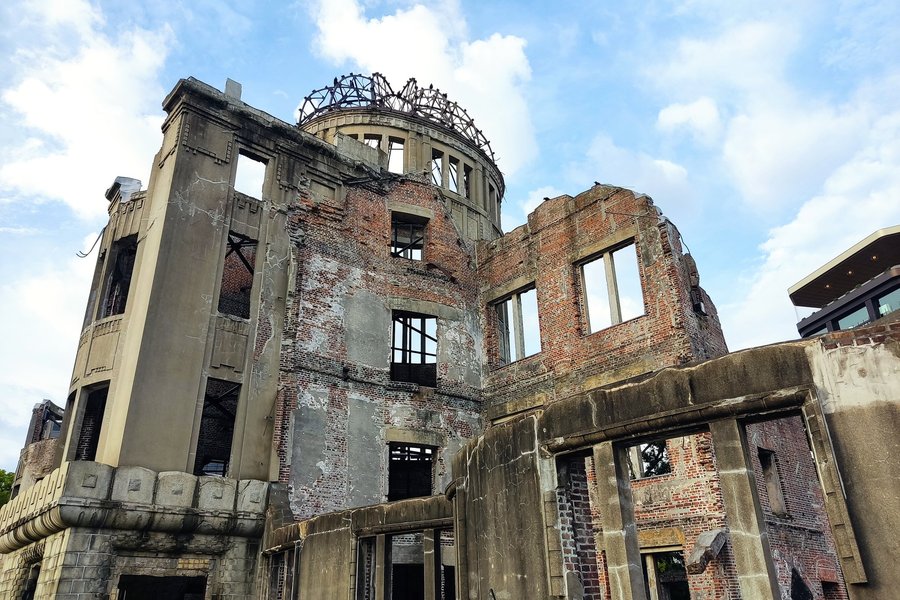
Time of the visit: 3-13,sept.,2025
I stayed in Hiroshima for 10 days and I passed the ruins of the former industrial promotion site every day,often several times a day during daytime and nighttime. Worldwide known as a symbol of the atomic mayhem which took place at the end of WW2 the building itself is nothing from another dimension.
However,it is the face of the first used atomic bomb against human beings.
I also visited or crossed the peace park opposite the Genbaku Dome several times as I often had to take the tram from there.
The Hiroshima Peace Memorial museum leaves no one cold or indifferent...including me. I left feeling sad and depressed. I visited all the different components of the park (fountain of prayer, resthouse, bell, memorial for the Korean victims, etc.).
I also visited the nearby Honkawa Elementary School Peace museum and the Fukuromachi Elementary School Peace Museum( ca a 5 min walk from the Peace Memorial museum).The schools were the closest ones to ground zero when the atomic bomb fell on August 6, 1945. Both schools lost hundreds of students and teachers.I would strongly recommend to visit both places as both schools complement the main museum well IMO.
I stayed in an old-style japanese house near the harbour which was built in 1929. It was witness to the nuclear attack.
One evening, while I was surfing the internet in bed, one of the old Japanese sliding doors toppled out of its frame and fell on my head. …
Keep reading 2 comments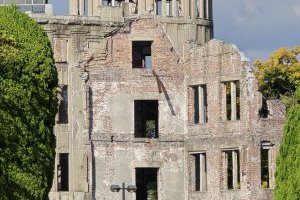
I visited Genbaku Dome in November 2024. Despite the sunny and warm weather, my mind wasn't sunny. A heavy feeling will land on you when you approach the ruins of what used to be the Hiroshima Prefectural Industrial Promotional Hall. We all know how we got the point that it's in ruins now and watching these ruins made me full of heavy thoughts. But I have to admit that still even in ruins it's quite attractive building. Opposite the Genbaku Dome on the other side of the Ota river is the Peace Bell that anyone can go to play. The sound of the bell playing over the Genbaku Dome makes the scene even more haunting.
Visit to the Genbaku Dome should also include visit to the rest of Hiroshima Peace Memorial Park that is dotted with multiple different memorials to the victims of the bombing, and the Hiroshima Peace Memorial Museum, a must visit to understand the horrors of the atomic bombing. After visiting this site I was wondering that did we learn as humans anything from this terrible tragedy? Thinking of current world politics I'm quite skeptical about that. And should a memorial to a tragedy be a World Heritage Site? Well, we have historical ruins on the WH List representing the end of different empires and so did the atomic bombing end one era of Imperial Japan and changed Japan and the world permanently.
Keep reading 0 comments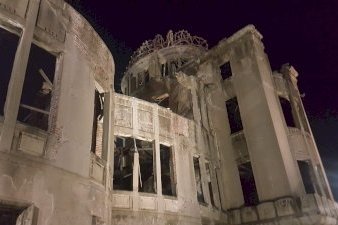
WHS#76
Genbaku Dome is one of the smallest WHS out there. The ruins of a single great building, surrounded by rails, are immaculately preserved as they were on August 6, 1945 after the Little Boy exploded almost directly overhead. Literally, it looks as if the tragedy had just happened a few days before when I visited one night in December 2019. I had just come from a day trip in Miyajima, and the long winter nights overtook me on my way to Peace Park. I don't regret seeing the dome at night, though. With the dark silhouettes of leafless trees ever so slightly covering my view as disembarked from the Meipuru-pu bus, the dimly lit concrete ruin was truly a startling sight. It felt ominous to see the dome at night, but it had a strange calming sensation too. There were barely any tourists around, and the few people there either passed by quickly or stood still while reading the information boards. I was totally free to admire and photograph the building from every angle, including right under the riverside entrance, where the rails were a few feet from the facade. While not part of the WHS core zone, the nearby Peace Park and most especially, the Hypocenter Marker a block away add a lot of insight into the tragedy that happened here. Back to the Genbaku Dome itself, it's truly a unique site. It was once an impressive building, but it never would've become a WHS if not …
Keep reading 0 comments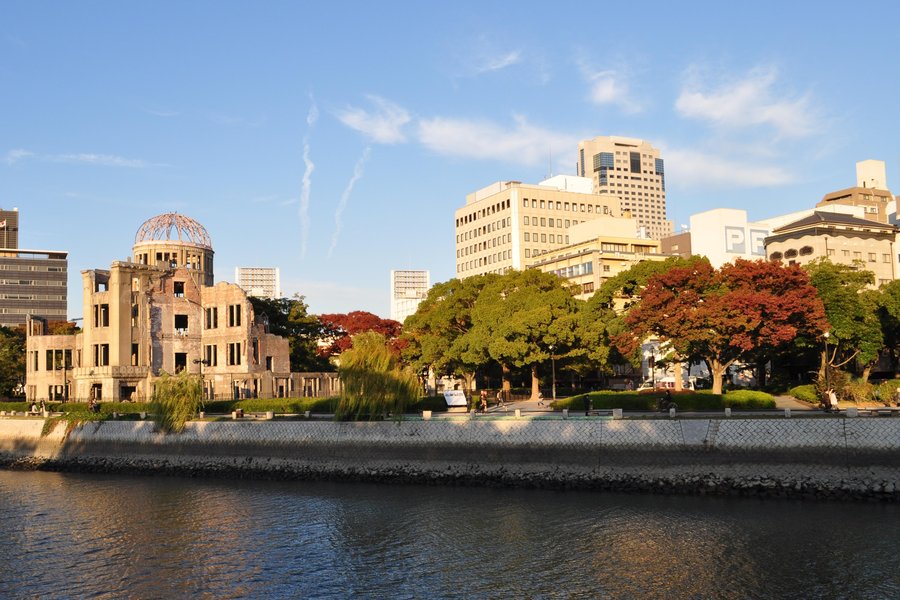
Summer of 2011, I made my first trip to Japan. My arrival was in Kansai. I have always wanted to visit four Japanese cities since my collegiate years: Kyoto, Nara, Nikko, and Hiroshima. On my first trip to Japan, I decided to see Hiroshima first. To date, the city prides two UNESCO World Heritage Sites: Itsukushima Shinto Shrine (popularly known as Miyajima) and the Genbaku Dome (Hiroshima Peace Memorial). This post is about the latter.
6 August 1945 changed Japan and the world - the first atomic bomb was dropped at Hiroshima killing almost 300,000 and continued the suffering of many others in the city. The detonation also marked the end of World War II.
A few meters away from the hypocenter (ground zero in the English-world context) is the Genbuku Dome or the Atomic Bomb Dome, which despite its location avoided a complete destruction. The remains of the building still stand today. Hiroshima decided to keep the ruins as a reminder of the senselessness of war. The memorial was inscribed a World Heritage Site in 1996 with the entire complex its buffer zone, which for the Japanese a symbol of the true value of peace.
At the time of the detonation, the building was the Hiroshima Prefectural Industrial Promotion Hall. The blast exerted about 35 tons of pressure per square meter and created a fierce wind speed of 440 meters per second. According to visithiroshima.net, “the building absorbed the powerful explosion and heat and burst …
Keep reading 0 comments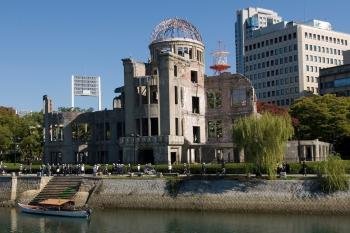
I visited this site in 2007.
This is one of the more somber world heritage sites you can visit, along with Auschwitz.
In addition to the park, I would also suggest visiting the museum which tells the history of the dropping of the atomic bomb and its aftermath in the city of Hiroshima.
While in Hiroshima, it is easy to visit the nearby Itsukushima Shrine.
Read more about the Hiroshima Peace Memorial (Genbaku Dome) on my website.
Keep reading 0 comments
Until Bikini Atoll's inscription in 2010, Genbaku Dome is the only World Heritage Site relating to nuclear technology which many people consider a new page of human history making this site to be one of the most unique on the list of UNESCO. My review will focus only for its physical appearance and try not to mention the WWII matters. Genbaku Dome is a ruined building in the centre of the city of Hiroshima and is a part of the much bigger Hiroshima Peace Memorial Park. The building is designed by a Czech architect, Jan Letzel, whose works mainly located in Japan and tragically most of them destroyed by earthquake and war, as a commercial exhibition hall, despite the destruction; many Art Nouveau and classical motifs of the building are still visible. Its iconic ruined dome and building have steel frame supporting to prevent the possible collapse.
It is a common misunderstanding that Genbaku Dome is the single building that survived the atomic bombs as many website claimed. In fact many concrete buildings in the town center are survived the bomb, and actually the small tourist center which located next to the bridge inside the Peace Memorial Park is one of them but no one seem to pay attention! Most of those buildings have been renovated after WWII, only the Genbaku Dome that has been preserved in its ruined state as the memorial. Another misunderstanding is that the dome is the hypocenter; the actual hypocenter is the nearby hospital or …
Keep reading 0 comments
I visited this WHS in November 2009. The A-Dome is the only standing building that was left after the Atomic bomb explosion. It is a powerful symbol of the destruction mankind can bring about but also a symbol of hope and world peace. The Peace Memorial Park and Centre is deeply touching and an important life experience.
Keep reading 0 comments
I visited this site on a lovely Sunday afternoon in October 2008. Yes it has taken me this long to make the decision to write this review.
I must state from the outset that I have never experienced the terrible war. But I was born in a country that was invaded and occupied by the Japanese for more than 3 years. My parents and grandparents suffered during these 3 years. I believe my grandfather lost a cousin because the Japanese thought that he might have been some anti-Japanese element.
I can't say that I'm angry with anyone over the war. After all the war is to me merely something I hear about from people who survived it or read about in books. But walking through that park that afternoon, I couldn't help but think about all the multitudes of people in various countries who had suffered tremendously because of the Japanese invasion and who are still in pain today.
At the same time, to be very honest, I could not help but wonder what I would have become if that bomb had not been dropped.
I see the dome as a reminder not only that the world must work hard for peace but that people must respect other people too despite their differences. War is simply not right.
Having said that, I got quite a kick from seeing a copy of the history textbook I had studied from being exhibited in that section on what other countries say about the …
Keep reading 0 comments
I am currently living in Japan and was able to visit the Genbaku Dome on a trip to Hiroshima and Miyajima this past weekend. I was very glad to go as it is a place that evokes a lot of thought. The thing that made me smile the most was a young woman sitting on the steps on the other side of the river with her guitar and singing her heart out. It gave me a feeling of hope that even at a place where the effect of war is so obvious you can see life continuing to move on.
I would recommend going to the Genbaku Dome and memorial part to anyone who has the chance. The museum on the site is also filled with many interesting artifacts from the time. Make sure you do your research about the the events that led up to the bombing of Hiroshima and Nagasaki before you go to the museum. There is a lot of very informative information about the building and growing of Hiroshima from its humble beginnings to being used as a port full of factories for the war effort, but the information becomes more and more biased as the history presented gets closer to the dates of the bombings.
Keep reading 0 comments
I was at Hiroshima in early 1952. I had gone to a supply specialist school on Eta Jima and had taken the ferry to Hiroshima on 3 different weekends. I have many pictures and remembrances of these trips. One I especially remember is a man coming up to me on the main street, turning around and showing me his back that was horribly burnt. He then turned back to me and showed me an old LIFE magazine photo of him with burnt skin hanging in shreds. Then, he handed me a card which read "K. K. Kikura - Number One Atom Bomb Sufferer" and wanted to sell me an autographed card. A friend of mine who was second in command of the Lawrence Livermore Laboratory, under Dr. Teller, told me that I may have gotten enough radiation in those all day visits to make it impossible for me to have children and we finally after 10 years of marriage, adopted a boy who is now 40 years old.
Robert Ramsdell, Albany, Oregon
Keep reading 0 comments
As an Army brat (living in Kobe, Japan, 1950-52, and attending Osaka American High school) we went on a basket ball trip to Eta Jima. On returning we stopped at Hiroshima for a 2 hour lay-over and visited the A-site (the Genbaku Dome) which was in total rubble at its base and some of the structure still remaining. The remainder of the city appeared level except for a few make-shift shacks standing. I met an elderly (in his late 30s or early 40's) Japanese gentleman who spoke and wrote perfect English by the name of Rev. S.T. Katsuki (this is 1951) who stated he was the Chief Priest of Sairenji Temple. He presented me with one of the ceramic tiles from this building revealing the blast discoloration from the bomb on the exposed portion of the tile, totally black. I still have this Atomic exposed tile in my possession. He then took off his shirt and showed me his back which was all in scared tissue. Because of the radiation, his time was limited. I'm able to send a photo of the Atomic struck tile by internet to those interested. While working for Nitto Denko America (Japanese Semiconductor Molding Compound Manufacture) in 1986, I had the privilege of visiting Nagasaki's Atomic bomb site. In 1953, while attending Northern Arizona University, a group of us drove to Nevada and observed an Atomic bomb explosion. We were 24 miles from the explosion site and felt the blast of wind. As an analytical …
Keep reading 0 comments
The Peace Dome Building was built by a Eastern Europian in 1915 & served as a industrial & promotional hall. And it survived the wrath of The Big Blast. Today it serves a reminder of what happens when you mess with the wrong group.
Some say there wouldn't have been Hiroshima if there wasn't a Pearl Harbor & for some it's Even Steven at it's best. However I do like to see in person and photograph the building in every angle & also photograph the model before August 6, 1945. It's a impressive building. By the way, my birthdate is August 6, 1955.
Marcus Brainard
Keep reading 0 comments
I visted the Hiroshima Peace Park in May 2008. The A-Bomb dome itself is an incredible building, thinking back to those days and what happened at the site makes you really think about how we treat each other. The Museum itself casts no accusations, gives no blame, it just states the facts while I feel if the situation was reversed I think some in the west might struggle to do especially when you consider the reason given for dropping the bomb on Japan rather than Germany (if the bomb failed Germany might be able to reverse engineer it, Japan would not) I spent an entire day in the park and it didn't feel like enough time. From the man collecting the paper cranes every day at Sadako Suzaki's memorial to the line that runs from the middle of the Museum, past the Peace Memorial to the A-Bomb dome this really is a place that makes you think about life. I can't recommend it highly enough not as a place to go and gawp, but a place to go and really think.
Keep reading 0 comments
I whent to Genbaku dome & the Peace park when i was 9, we were on a family holiday, the experance opend my eyes on the whole wars thing. While i was there i lernt to make papper crains, and when i got home i tried to teach my class how to make them so we could make a thousand paper crains to send to the peace park!! I'm still working on it 3 years later!!
I'm doing a goeography assiment about world herriage sites & i chose Hiroshima Peace Minorial (Genbaku Dome) for it, having witnessed it & all the suffering.
I've read a book about this devistating event in a chineese point of veiw, it is verry diffrent... but i think the bottom line is this
The wars were dredful, My heart is out to all hows family members, Friends were lost in the war & THAT WARS NEED TO BE STOPPED
Keep reading 0 comments
Go to the Hiroshima Peace Memorial Park with an open mind and witness the destructive power unleashed at the dawn of the nuclear age. Remember that the world is now a perilous place with nuclear weapons a hundred fold more powerful than the bombs dropped on Hiroshima and Nagasaki. My 13 year old daughter and I visited Genbaku Dome and the Park on 8/6/08 and left with a sense of foreboding and also one of hope; sadness at the thought of the many children who perished; wonder and amazement of the people of Hiroshima who have transformed this city in a little over two generations. For many from all the nations involved, the war will never be completely over for the pain is great. But it is up to us, the generation of the here and now, to forgive and to make sure this kind of war never happens again.
Keep reading 0 comments
I returned from Hiroshima yesterday (6th august 2006). It was my childhood dream to see Hiroshima cos' we had a topic about Hiroshima in our text book .Gembaku dome's photo was there too . They only thing that had created deep impact in my mind when I was a elementary school student is that ,America dropped atomic bomb on that city and killed most of the people . After so many years ,when I visited the A-bomb dome and the peace memorial park , I couldn't stop crying . Seeing all those artifacts ,I only thought that how cruel the decision makers were !! I saw couple of American's there too .I was trying to see their facial expression ,are they seem to be repentent or ashamed for their forefather's cruel decision ? To stop war immediately by killing thousands of people was not a good idea indeed . Another thing knocked me that was Japan hides its brutality ,it never says what they do to their neighbours . The museum told about Japanese citizens who were killed by A-bomb .The museum's history has little or no place for the Korean slaves who were forced to come to Japan . The museum didn't tell the whole history rather than a part that is looking for sympathy .Yes ,surely it can melt somebody like me who's memory consisted of only one picture .But truth should be revealed ,history should be completed .
Keep reading 0 comments
I`ve been to the Hiroshima Peace Memorial a couple of times before in my life. What I noticed was that war isn`t the answer. It won`t do anything but harm the innocent ones. Of course, Japan was not fair but the bomb the American`s dropped was unimaginative and it had brought destruction. I`m a Japanese-American and I love and support both Japan and America very much. I`m very happy that now, we have friendship and trust. I`m twelve and I`ve only been to the Peace Memorial when I was little so I hope to go this year to find more about it.
Keep reading 0 comments
i had the chance to see the genbaku dome in the year 2000' its something interesting. the only structure leftstanding in the area where the first tomic bomb exploded on august 6,1945. It is amazing how that building has a lot of meaning to the citizens from hiroshima, it attracts people from everywere, including my country, Honduras.
Keep reading 0 comments
Hiroshima is one of the most evocative places I have ever visited. The hardest thing with Hiroshima is separating right and wrong. At times, the museum glosses over Japan crimes in WWII - as is true through-out the whole country.
Whatever the other arguements the site is incredibly moving and a compelling arguement against nuclear weapons.
But, I would ask all visitors to say an extra pray at the monument for the Korean victims of the bomb. These people, slave labourers transported from Korea, have been ignored by Japan for far too long - the Governments lack of apology on this matter is inexcusible.
The final thing that I must add about Hiroshima is that the people of the city lift the spirit beyond belief. It is, perhaps, Japans most friendly city.
Keep reading 0 comments
Well I just returned from the city of Hiroshima the weekend of June 19-20. Beautiful city, the buildings left reminaing or a site to see as well as the "A" Dome in its original state. War is war proven through centuries of history. The dome is a reminder of what weapons of mass destruction can do yet I felt the museuem was hippocritical and looking for sympathy instead of educating. Taking facts and bending them too much and having 90 percent of the artifacts of that belonging to children. Seems that the City forgot what the country did in Nanking, Singapore, Hong Kong, Pearl Harbor, Philippines, Malaysia, Indonesia, and the list will always continue... And what it would have took to end the war in the Pacific. This place willl leave the ignorant in history take it for what it is and not what it should be.
Keep reading 0 comments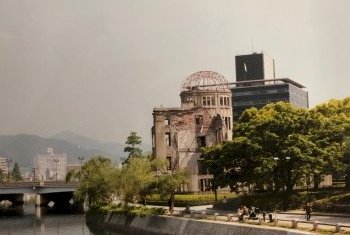
The museum in the Park tells the story about the bomb on Hiroshima, but also about all the nuclear tests that were executed after that. I found this, and the rest of the Park, very impressive and tasteful.
Hiroshima itself is of course a very modern city, but I liked it a lot. It has a lot to offer, for example ... another World heritage! The Itsukushima Shrine is situated on an island in front of Hiroshima-City.
Keep reading 0 comments
